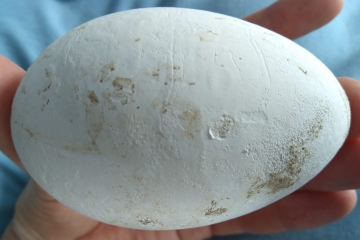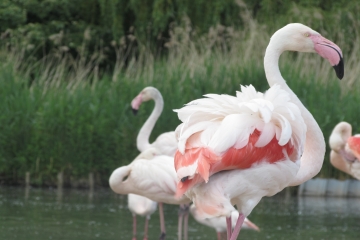Summer research round-up #2
Greetings flamingo followers. I promised a second update on the flamingo science in the WWT collection this summer, and whilst this is the first day of autumn, I'm not too far behind schedule. In my last post I introduced you to the work of one of my students, Abbie, and in this post I will talk about the work of the other, Dimitrina. Between April and July, Dimitrina has been observing the Andean and lesser flamingos at WWT Slimbridge, looking at interactions between the birds and how these are caused. Dimitrina was also interested in the long-term friendships within this group to see whether these relationships occur year after year.
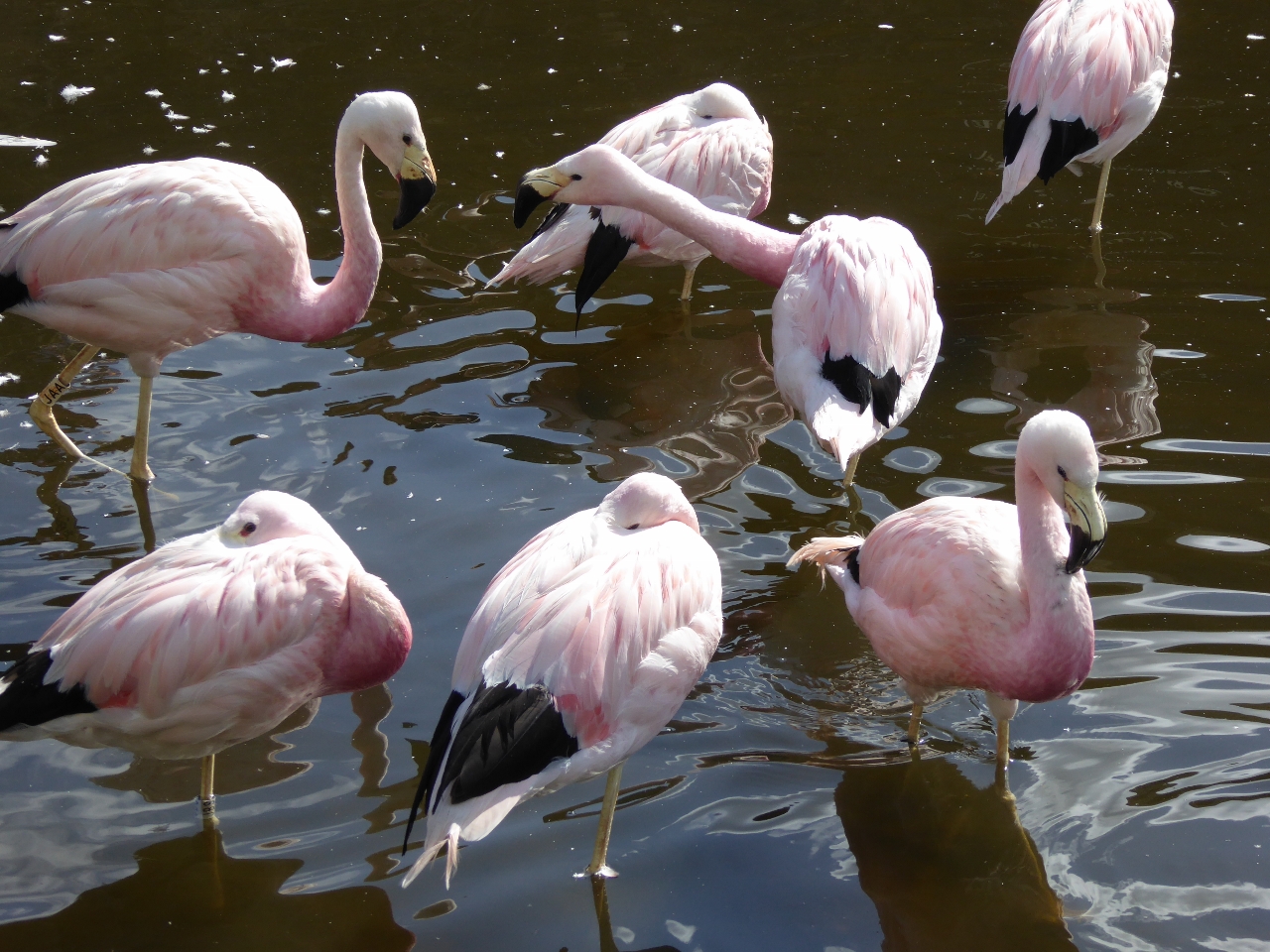 Aggression between flamingos can be caused when they invade each other's personal space. Birds that are evenly matched (like the two boys with necks outstretched here) can come to blows.
Aggression between flamingos can be caused when they invade each other's personal space. Birds that are evenly matched (like the two boys with necks outstretched here) can come to blows.
Dimitrina looked at data from 2013, 2014, 2015 and 2016 that had already been collected and compared these data to her own observations of the birds themselves. As flamingos are long-lived animals, there are lots of chances for birds to form long-standing relationships with others in the flock. How these relationships change over time can be important to all birds involved as positions within the group might be altered. Dimitrina has found that flamingo friendships can be very stable- with birds seen together in 2013 still being the firmest of friends in 2017. Evidently when a bird likes another one, they will stick together. It is important for us to know this as if flamingos ever have to be moved, we should consider these relationships and make sure that we do not split up pairs of birds that may be very attached to each other.
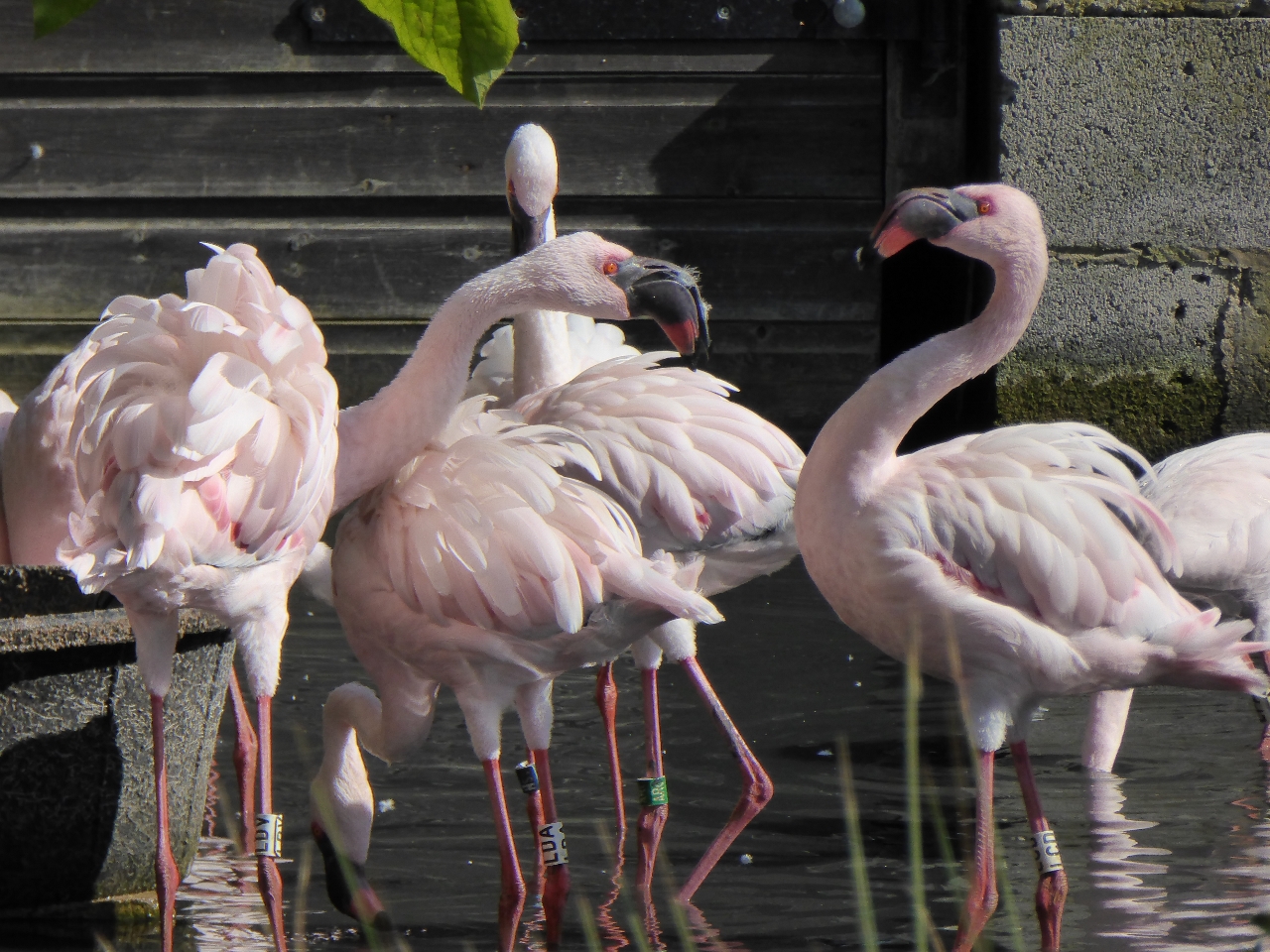 Squabbles in the lesser flamingo flock don't always occur randomly.
Squabbles in the lesser flamingo flock don't always occur randomly.
Changes do occur within the flocks though. Sadly, birds will die and chicks are hatched. Sometimes, new adults are brought in to the group. New flamingos arrived in the lesser flamingo flock at the end of 2014. You can see in the photo above, there are two birds that have blue and green leg rings respectively. We have followed the lives of these five new birds to see how they adapt to life in a new flock, and how they make new flamingo friends over time. Here two of them are right in the thick of the action showing that, three years later, these birds have found their niche in the group. Dimitrina's research has given us interesting and useful details on how long it takes for flamingos to settle into a new flock, and to form different relationships away from their original group.
These five new lesser flamingos spent the majority of their time as a small group, all together for the first year or so. But they have since branched out to associate with other flamingos too. They have built more connections each year from 2014 to current, and are now seen with a range of other birds. However they still enjoy the company of the flamingos they are most familiar with- i.e. the other birds they arrived with. Interestingly, these flamingos have had the biggest influence over nest building in the flock. So it has been a positive to have this injection of "new blood" into the group.
On the opposite end of the scale, we have birds that have lived together since the 1960s in a stable flock. The reason Dimitrina and I decided to use the Andean and lesser flocks for this project was because some of these birds have spent nearly six decades at Slimbridge. During the course of my PhD we have had birds die in both flocks, so we can measure the effect of loss on the birds in each group. Why would we care about this? Because flamingos can rely on each other for "social support" (i.e. they benefit from having their friends around), when one member of a relationships is no longer there, the bird may be more alone in the group.
I can illustrate what I mean here in the photos below.
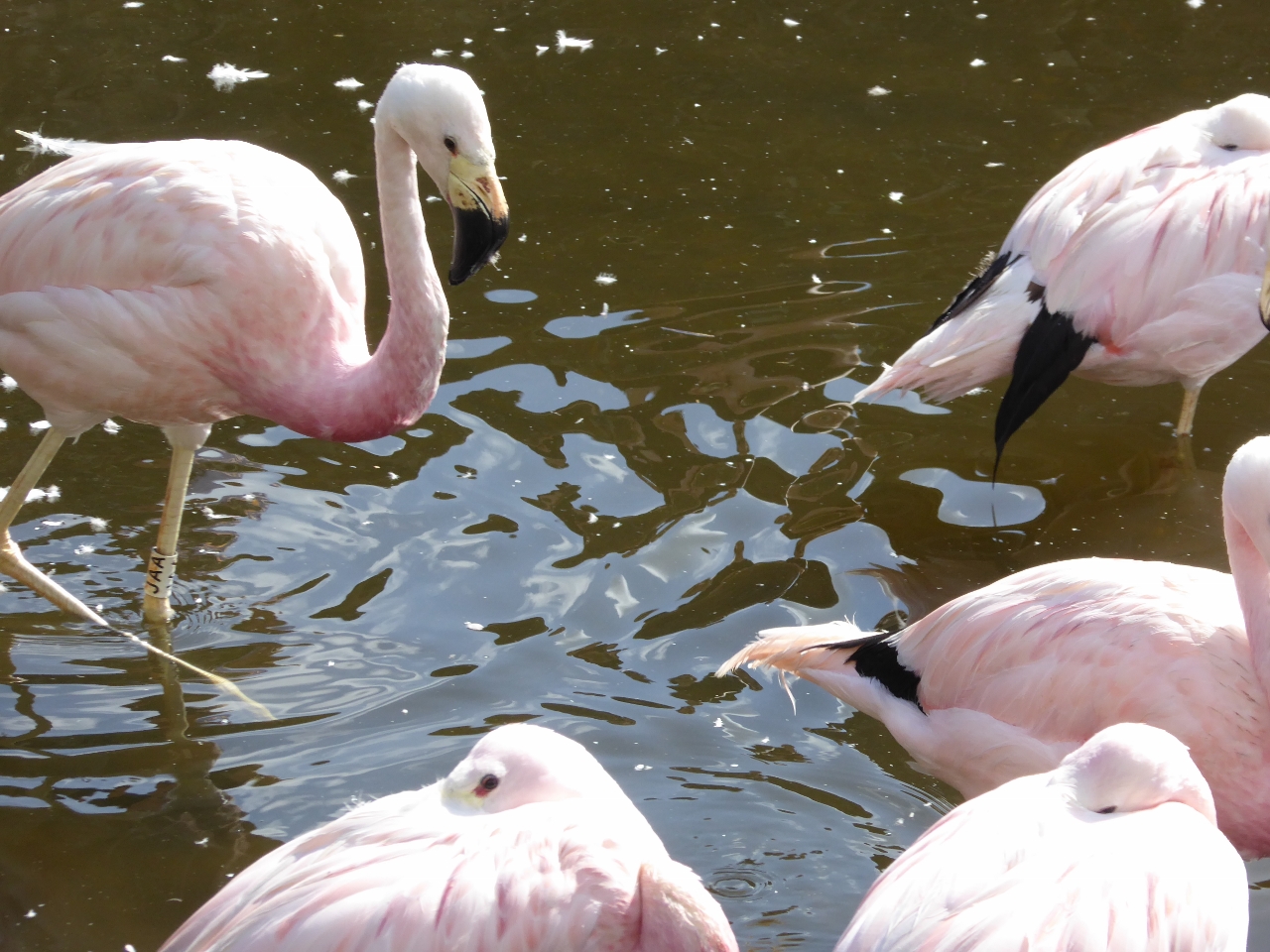 When one bird, in this case JAA, follows another (heading out of the photo) and has to dodge fewer grumbles from other flamingos.
When one bird, in this case JAA, follows another (heading out of the photo) and has to dodge fewer grumbles from other flamingos.
In this first photo, JAA a male Andean flamingo follows a female (JAC) through the flock. She ploughs her way through and he benefits from this as the birds are less likely to have squabbles and grumbles from other flamingos. The flock "knows" these birds are friends and will stick up for each other.
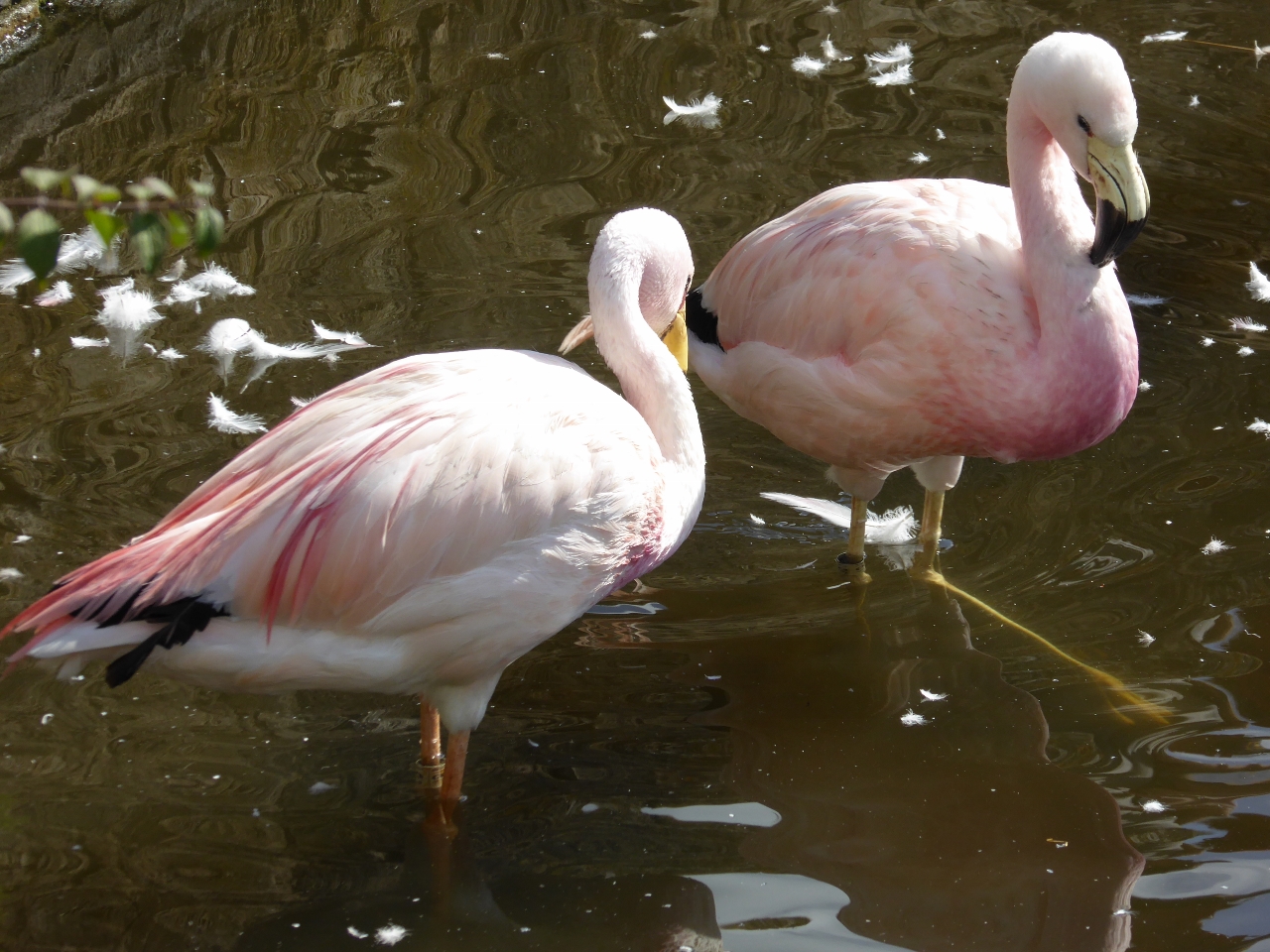 Mr James' threatens a passing Andean flamingo with a swinging head movement.
Mr James' threatens a passing Andean flamingo with a swinging head movement.
When another flamingo, in this case JAE, wants to follow the other pair (JAA and JAC), she has left it too late and is isolated. Consequently she gets more aggravation from the others. Mr James, renown for his short temper, swings his neck and jabs in a threat display as she passes. You can almost see the distaste on her face...?!
Dimitrina has showed that different flamingos respond in different ways to changes in their social partnerships. Some birds became more sociable- increasing the time they spent with other birds across the flock. Others withdrew and become less social, until they too find new partners to associate with. Maybe, just like us humans, flamingos have different ways of coping with changes to the social circle around them.
What I love about the WWT flamingos is that they are still telling us so much about how these animals behave. Even though this is the fifth year of MSc projects I have run at Slimbridge, we still find out new information on what they do and why with each set of students. I hope that you have enjoyed another foray in the world of WWT flamingo science. And maybe you will be able to spot some of the behaviours (and some of the individuals) I have described on your next visit to see these fantastic pink birds.
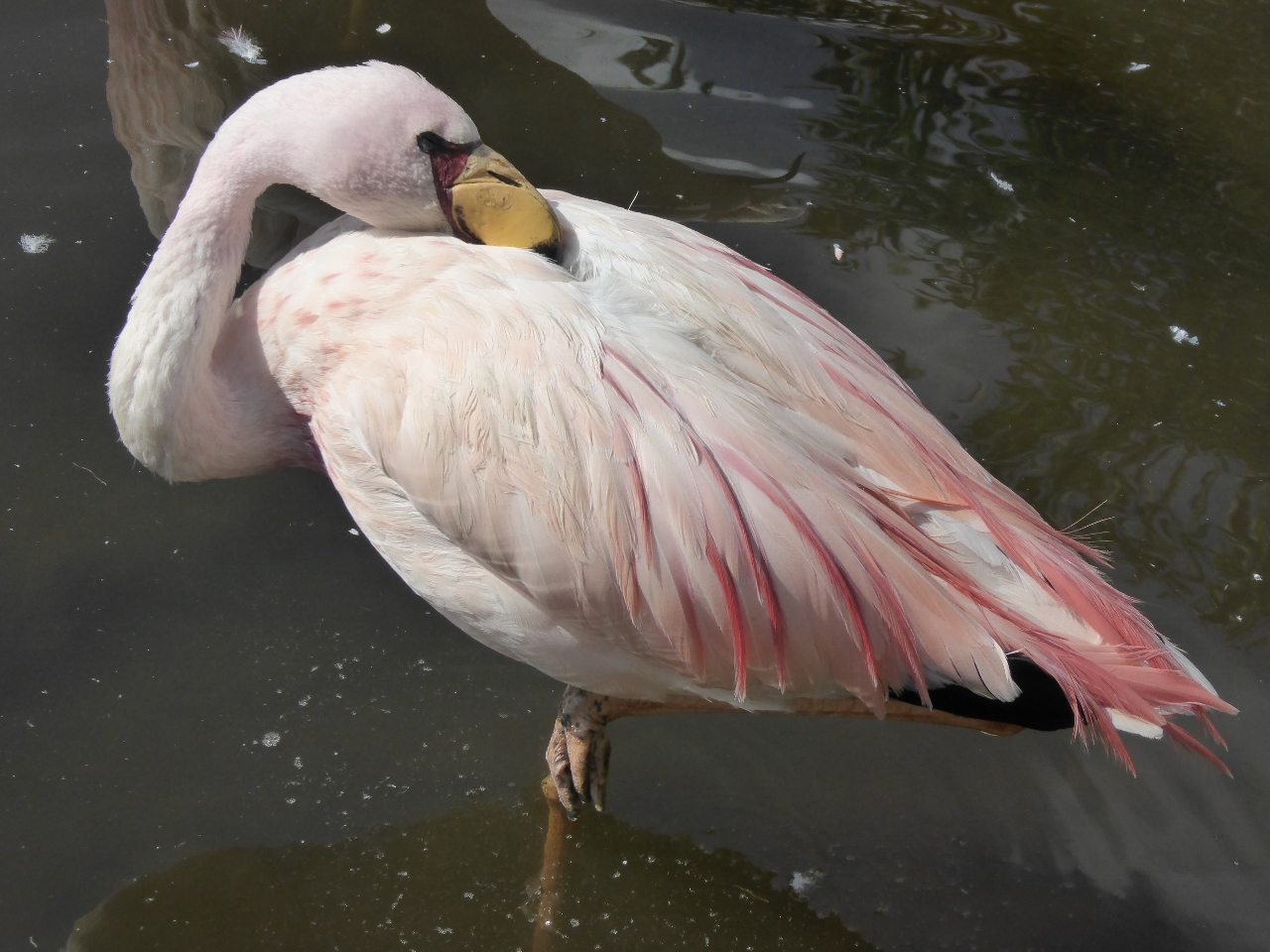 Maybe if I just pretend to sleep, everyone will leave me alone...?
Maybe if I just pretend to sleep, everyone will leave me alone...?

